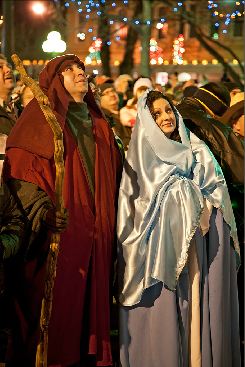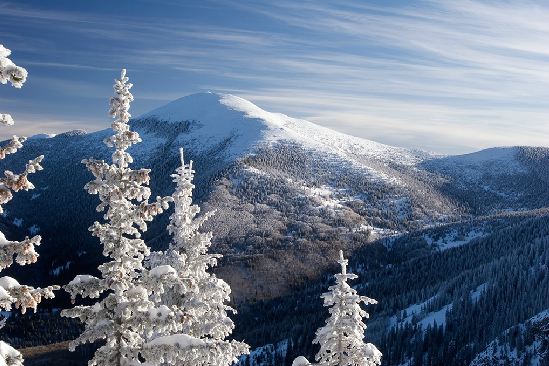If you think of winter as a great time to take your photography inside, think again. Full-time professional photographer Efrain Padrό grew up in Puerto Rico, but these days makes his home in Santa Fe. He says winter is a perfect time to work on outdoor photographs that appeal to editors because so many other photographers stay inside when it’s cold. See below on how to deal with winter photo challenges, and for tips on taking winter shots that sell… –Lori Lori Allen Director, Great Escape Publishing TIPS FOR PHOTOGRAPHING IN WINTER By Efrain M. Padrό in Santa Fe, New Mexico As soon as the mercury heads south, most photographers head inside. After all, who wants to photograph in cold, icy conditions, when you could be enjoying a cup of hot cocoa in front of a fireplace? Successful photographers, that’s who! Winter images, because they can be more challenging to take than traditional photographs (everyone is a photographer when the weather is warm), offer a great opportunity for making sales. Not only are these images less plentiful, but editors of seasonal publications (state vacation guides, for example) are always looking for good winter images. The following are a few tips for photographing in winter.
- Keep Snow White: Camera light meters calculate exposures by averaging the contents of a scene to middle tone. This means that a scene with lots of snow will come out looking gray. To avoid this, use your camera’s exposure compensation by adding two stops (or so) of light, which will make snow look white. Check your histogram to make sure the graph is not bumping against the right side, which would mean your picture is overexposed (no detail on its lightest portion.)
- Keep Your Hands Warm: Nothing will make you more miserable — and send you running for the fireplace — more quickly than cold hands. To keep your hands from becoming uncomfortably cold, use chemical heat pads available at outdoor and hunting stores. Put them inside your gloves (and boots) and thank me later.
- Keep Batteries Warm: Batteries lose their power and effectiveness when they get cold, so it is likely you will have to change batteries during a long shooting session. Therefore, make sure you keep a spare battery handy, and keep it inside your coat pocket so it stays warm. And don’t be surprised if your “dead” battery comes back to life after a few minutes in your warm pocket.
- Use Tripod Snowshoes: There is nothing more frustrating than trying to use a tripod in deep snow. The legs spread outward and become unstable, defeating the purpose of using the tripod in the first place. Fortunately there are snowshoes made for tripods (no lie), which are relatively inexpensive and take a minute to put on. The ones I use are made by Manfrotto.
- Photograph “Winter” Subjects: Make sure you photograph season-specific subjects like the local tree-lighting ceremony, the annual caroling competition, and the ice-carving contest. These events happen only once a year, so put them on your shooting calendar and take a variety of pictures when you attend. The picture here depicts Las Posadas, a Santa Fe event that commemorates Mary and Joseph’s looking for shelter before Jesus’ birth. It has sold a number of times to local and regional publications.
- Photograph Familiar Subjects…Under Snow: Also take pictures of more familiar subjects, but covered in snow. Often these subjects look completely different (or even better!) covered in snow, and as I mentioned they are in demand for winter issues of a variety of publications. This picture of Santa Fe Baldy covered in snow has sold a number of times, mostly because it is unique (we don’t get many big snow storms in the area).
[Editor’s Note: Learn more about how you can turn your pictures into cash in our free online newsletter The Right Way to Travel. Sign up here today and we’ll send you a new report, Selling Photos for Cash: A Quick-Start Guide, completely FREE.]
Travel Photography Resources
5 Dos and 2 Don’ts for Travel Photography
Take Great Photos And Get Paid More For Your Travel Articles
Turning a Photography Hobby into a Monthly Income
The Pros Of Selling Your Images As Stock Photography
16 Mobile Photography Tips And Tricks Every Photographer Should Know



